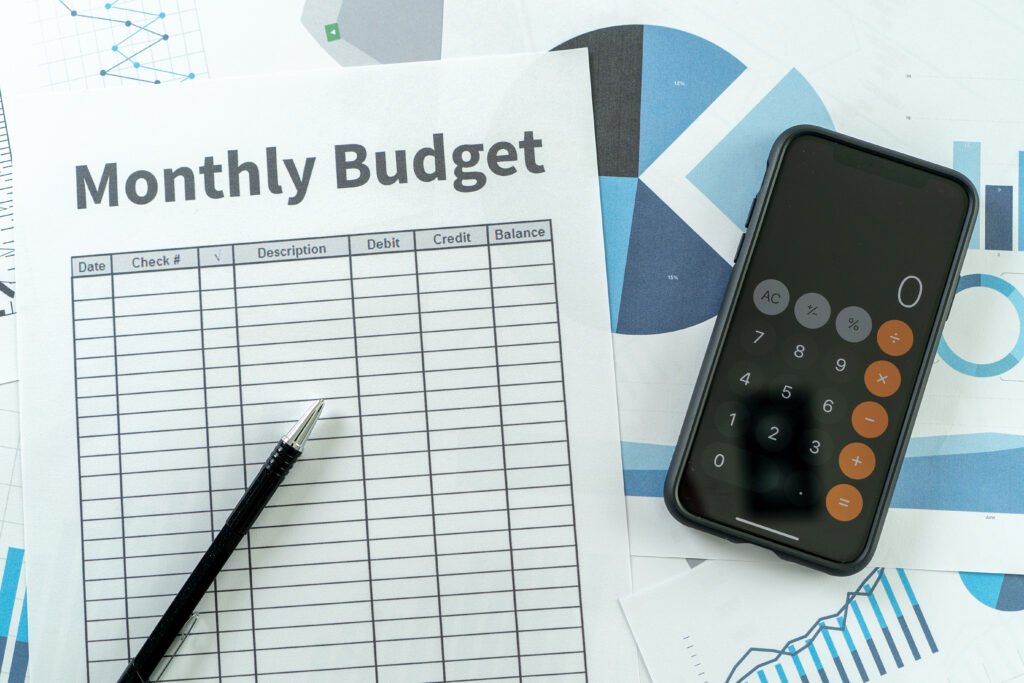
The majority of people require a method to track their monthly spending. A budget can provide you a greater sense of financial control and facilitate the process of setting aside money for your objectives. The secret is to find a financial tracking system that you are comfortable with. The six simple techniques for budget planning below will help you.
Step 1: Determine Your Net Income

Your net income is the cornerstone of a successful budget. That is your take-home pay, which is your entire income less any taxes deducted and any employer-sponsored benefits like health insurance and retirement plans. If you focus on your total pay rather than your net income, you may overspend since you will believe that you have more money available than you actually have. Keep thorough records of your contracts and payments if you operate as a freelancer, gig worker, contractor, or are self-employed to help you handle erratic revenue.
Step 2: Monitor Your Expenses

Determining where your money is going is the next step after determining how much of it you are bringing in. You may find out what you are spending the most money on and where you might be able to save the most by keeping track of and organizing your costs.
List your fixed expenses first. These are consistent monthly expenses like utilities, rent or mortgage, and auto payments. Next, make a list of your variable expenses, which include things like groceries, petrol, and entertainment that can vary from month to month. Here are some areas where you may be able to make savings. Since credit card and bank statements frequently list or categorize your monthly expenses, they are an excellent place to start.
Using a pen and paper, an app on your phone, or online budgeting spreadsheets or templates, keep track of your daily expenditures.
Step 3: Make Sensible Objectives

List your short- and long-term financial objectives before you begin going through the data you’ve tracked. Short-term objectives, such as creating an emergency fund or paying off credit card debt, should be completed within a year to three years.
It may take decades to accomplish long-term objectives like investing for your child’s college education or retirement. Though they don’t have to be rigid, knowing what your goals are will help you stay within your spending limit. For instance, if you know you’re saving for a trip, it might be simpler to reduce your spending.
Step 4: Create A Strategy

The difference between what you really spend and what you wish to spend is where it all comes together. Make use of the constant and variable expenses you gathered to estimate your future spending. Next, contrast that with your priorities and net income. Think about establishing precise, attainable spending caps for every expense category.
To further refine your spending, you might separate your expenditures into necessities and wants. For example, gasoline is considered a need if you travel to work every day. On the other hand, a monthly music subscription can qualify as a want. When you’re trying to figure out how to get money to go toward your financial objectives, this distinction becomes crucial.
Step 5: Modify Your Expenditures To Adhere To Your Budget

You can now make any required modifications to your income and spending to ensure that you don’t overspend and have money left over to work toward your goals. Consider making cuts in the direction of your “wants” first. Is it possible to forego movie night in favor of a home movie? Examine your monthly payment expenditure more closely if you have already made adjustments to your spending on demands. Examining closely reveals that a “need” might just be a “hard to part with.”
If the figures don’t add up after that, consider modifying your fixed expenses. For example, could you save more money if you shopped around for a better deal on homeowners’ or auto insurance? There are significant trade-offs associated with these decisions, so carefully consider your options.
Recall that little saves can build up to significant sums of money. One small change at a time can surprise you with how much additional cash you end up with.
Step 6: Consistently Review Your Budget

Once your budget is established, it’s critical to regularly assess both it and your expenditures to make sure you are remaining within your means. There aren’t many fixed components to a budget: you might receive a raise, your spending might shift, or you might accomplish a goal and wish to set aside money for a new one.
For whatever reason, make it a practice to review your budget on a regular basis by following the above guidelines.
